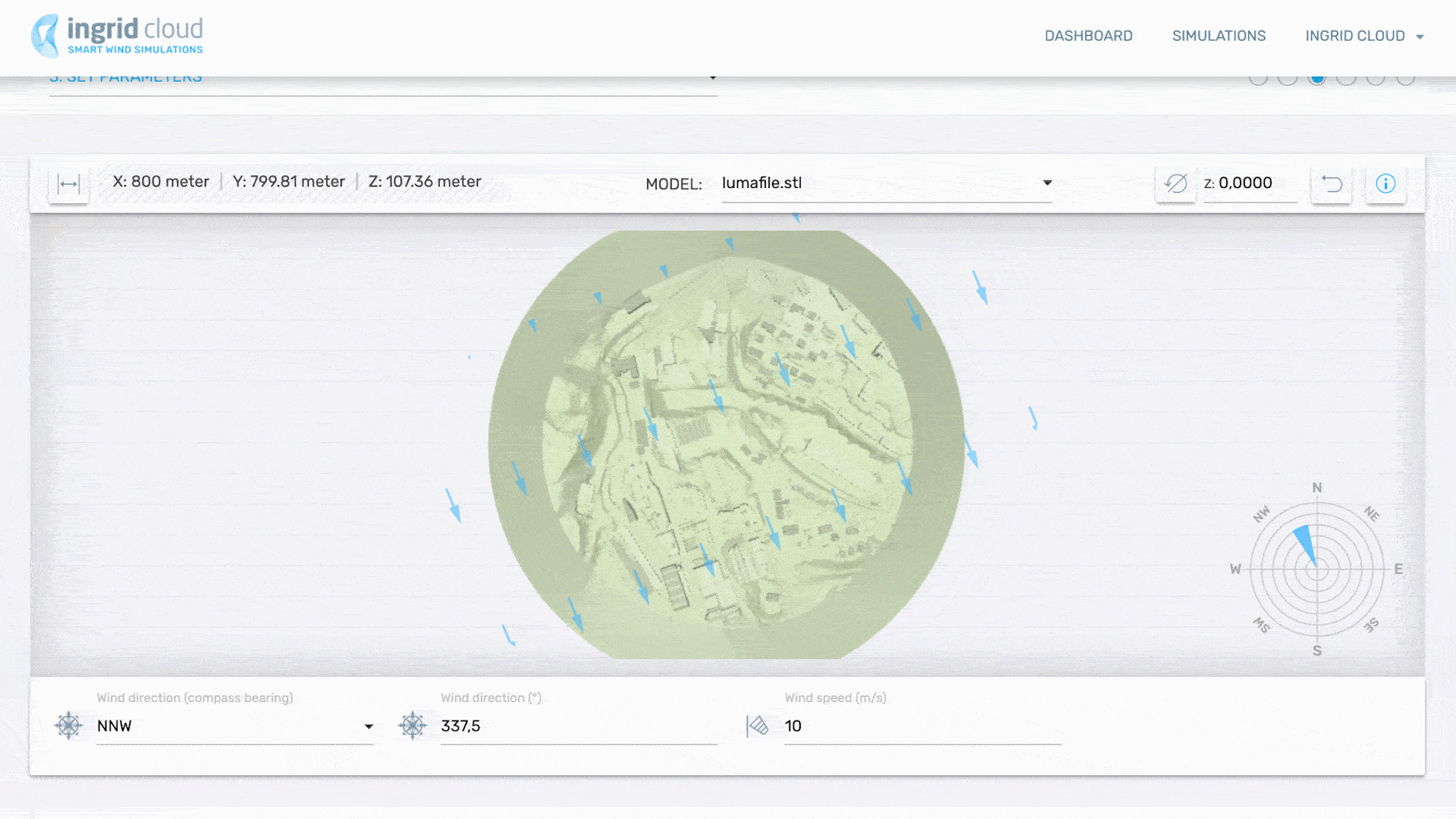Wind Score App - Frequently Asked Questions
Wind Score is a wind simulation program that runs multiple CFD simulations simultaneously. The application is a newly developed solution and it's in constant iteration. If you don't find the information you are looking for in this post, please, write to us at support@ingridcloud.com.
What’s the score based on?
Wind Score ranks the different models according to the average velocity based on the inflow wind speed from one direction, area of interest (set by the user), and evaluation height (set as default to 1,5 m).
Choose your evaluation domain carefully and study the Wind Effects in connection with the Wind Score rank.
How to interpret the results of Wind Score simulations?
You need to analyse the automatically generated score in connection with the Wind Effects visualisations available in the report. Having a previous understanding of the mechanical behaviour of wind is also important to interpret Wind Score results. Let’s see an example.
Model 1 has a higher average velocity in the chosen area than Model 2 (5 m/s vs. 6.1 m/s, respectively). By further analysing the Wind Effects tab, it’s possible to see that Model 2 is causing a Passage Effect, which is not a desirable scenario for pedestrian comfort. A professional designer would want to optimise the design in order to avoid the Passage Effect between the towers making the flow accelerate distinctively.

Now, if the area of interest is narrowed down to the specific spot where the Passage Effect is happening, the Score will display a specific evaluation for that spot:

In conclusion, the user has to choose the evaluation domain carefully and study the visualised wind effects in connection with your analysis as well.
Can I use this application for a pedestrian comfort analysis?
Wind Score is designed to support pedestrian comfort analysis. The goal is to enable the comparison of multiple design options at once to find an optimised design for pedestrian safety and comfort. Therefore, analysis is conducted with only one wind direction. Ingrid Cloud offers another application that specifically runs Wind Comfort analysis: click here.
Which wind direction should I choose?
That depends on the aspect you want to examine. If you are interested in evaluating yearly pedestrian comfort, then the prevailing wind direction gives you a good indication. If you are interested in analysing the comfortability of an amenity for outdoor seating, then the prevailing direction during the summer months can be chosen. Or there might be a special wind direction created by the surrounding topography such as a canyon, for example, you may want to examine. The local weather data will inform you about the prevailing wind directions.

I do not have access to any wind data. How should I know the prevailing wind direction and its magnitude?
Please check with the local weather station. There are also several free repositories online such as: http://climate.onebuilding.org/.
Do I need to prepare the model for simulations with Wind Score?
Wind Score is designed to be used in early design stages, therefore it supports simple geometries. The uploaded models should be simple, should contain no topography or terrain and be free of excessive details (stairs, vegetation, façade details, etc).
For more information on supported file formats and other general instructions on how to prepare urban models for wind simulations, click here.
Which wind profile is used?
The user can choose between Eurocode – EU (EN1991 1-4) - and Minimum Design Loads for Buildings and Other Structures – US (ASCE 7-10).
Can I get the raw data like in the Wind Comfort app?
This feature is only available by demand, please, contact us.